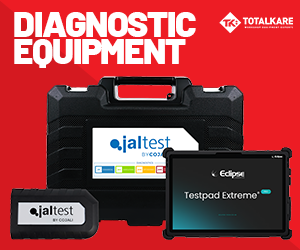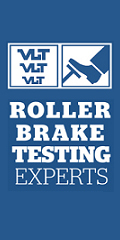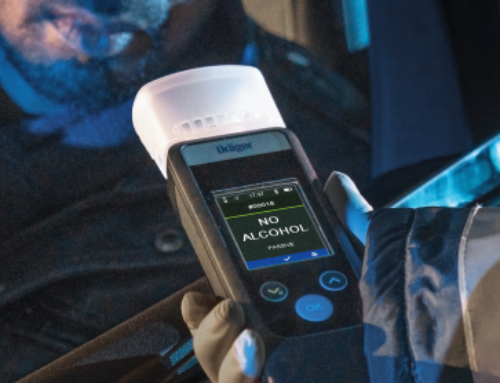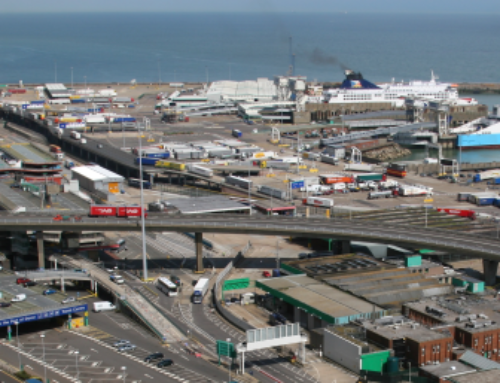Safety tech in focus at TM Conference
 Two speakers at the Logistics UK Transport Manager Conference provided views on developments in vehicle safety technology. James Ashford, the head of commercial services at Brigade Electronics, said the technology sold by his company and others had to be managed effectively.
Two speakers at the Logistics UK Transport Manager Conference provided views on developments in vehicle safety technology. James Ashford, the head of commercial services at Brigade Electronics, said the technology sold by his company and others had to be managed effectively.
“If one of your vehicles is involved in a fatal accident, the driver may well be in shock immediately afterwards, and he may well still be in shock when first interviewed by police,” he said.
“When you contact your insurers, some of the first questions you will be asked are do you have witnesses and do you have video footage.”
Obviously, images recorded by on-vehicle cameras can be vital in settling cases of this kind, and can also be very useful if used as a driver training aid. Live services could enable transport managers to view incidents directly, and also uncover something as simple as a camera not working, before there was any need to recover footage from it.
Many operators had installed cameras in response to FORS direct vision standards: initially the emphasis had been on nearside mirror blindspots, but the latest incarnation of its standard required off-side cameras too, while Transport for London now said that frontal collisions were more common than side-swipes.
“Drivers can’t see everything in their mirrors all the time,” he said, but Brigade now had a predictive warning system that could pick out vulnerable road users from street furniture.
Brigade recommended a mixture of active and passive support systems: the former included sensors and alarms and the latter cameras and monitors.
“Drivers want the support and help of these systems, Mr Ashford said. “They need to be involved and engaged in the system, but technology doesn’t replace best practice in driving.”
 This latter sentiment was picked up by Lili Oliver, partner at solicitors Weightmans.
This latter sentiment was picked up by Lili Oliver, partner at solicitors Weightmans.
She pointed out that the introduction of screen-based ‘infotainment’ systems on vehicles had led to a staggering 35 per cent increase in failures to register events on the road.
Driver ‘aids’ had led to drivers’ reliance on them. “But it’s only an aid, drivers cannot rely on them,” she said.
“How well have your drivers been trained to use their mirrors and other such driving aids. How have these systems been positioned to suit the individual driver?”
One of the biggest dangers was fleet drivers swapping between vehicles with and without systems.
“There is still a need to be a careful and competent driver. It’s an issue that only comes to mind when things go wrong.”
And when they did, data gathered by vehicles and telematics systems could be used against operators and drivers.
“After a serious accident, the police will get your data: data that talks about how vehicles have been driven over a period of time,” she warned. “It can be used as evidence to support a charge of dangerous driving.
“Some systems will gather evidence of driver fatigue, such as prolonged blinking. Driving when fatigued can be classed as dangerous driving.
“It’s a big risk to businesses that use vehicles, as health and safety legislation can now be applied to driving risk. There are huge financial penalties: over £1 million for the company, plus senior managers and directors can be charged with neglect and connivance.
“Companies that have data about risk but have not acted upon it are the biggest challenge to defend,” she warned.
“Policies and procedures must be in place to monitor data and act upon breaches and red flags.
“For example, what’s your approach to overspeeds? If an overspeed of up to five per cent is acceptable and not acted on, what happens if it results in an accident outside a school?
“But be careful: people have successfully challenged an unfair dismissal because equipment was inaccurate.”
She reminded the audience that the transport manager was the individual responsible for a safe and compliant operation. A consistent approach to safety-critical equipment was needed.
“What if a camera isn’t working: should a vehicle still go out. You need the camera to go into London, but is the vehicle safe to operate elsewhere without it?”
She warned operators to be aware of the GDPR data protection legislation.
“Monitoring vehicle movement falls within scope of the legislation,” she warned. “And vehicle speed is personal data. Its storage needs to be covered by your employment contract and compliant with the legislation. Check: you may be holding data unlawfully.
“Investment in technology heeds to go hand-in-hand with investment in organisational structure. If you don’t discipline drivers, you aren’t managing drivers.
“The pool of drivers may get smaller as you need to hire drivers who have knowledge of the technology on your vehicles. Is it safe to use agency drivers who are untrained on the specific equipment on your vehicles?
“Untrained agency drivers pose a huge risk for operators who use them.
“Transport managers have far more to do now in supervising drivers: if we run a 24-hour operation, do we need a 24-hour transport manager?
“Responsibility ultimately lies with directors: more time is need for boards to look at the safety data generated by transport: old practices can’t be run alongside new technologies.”












